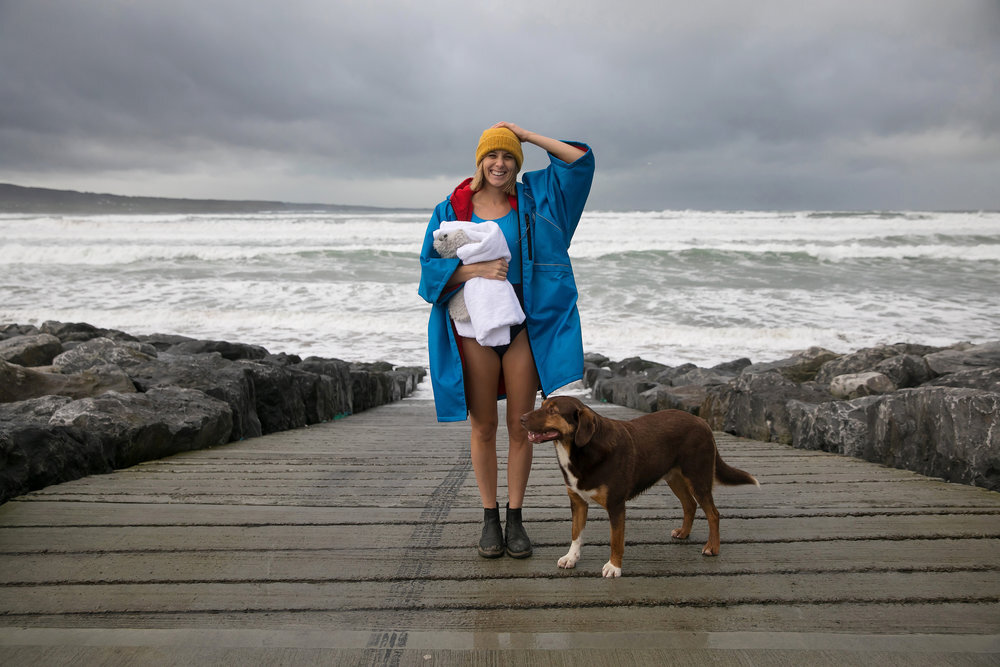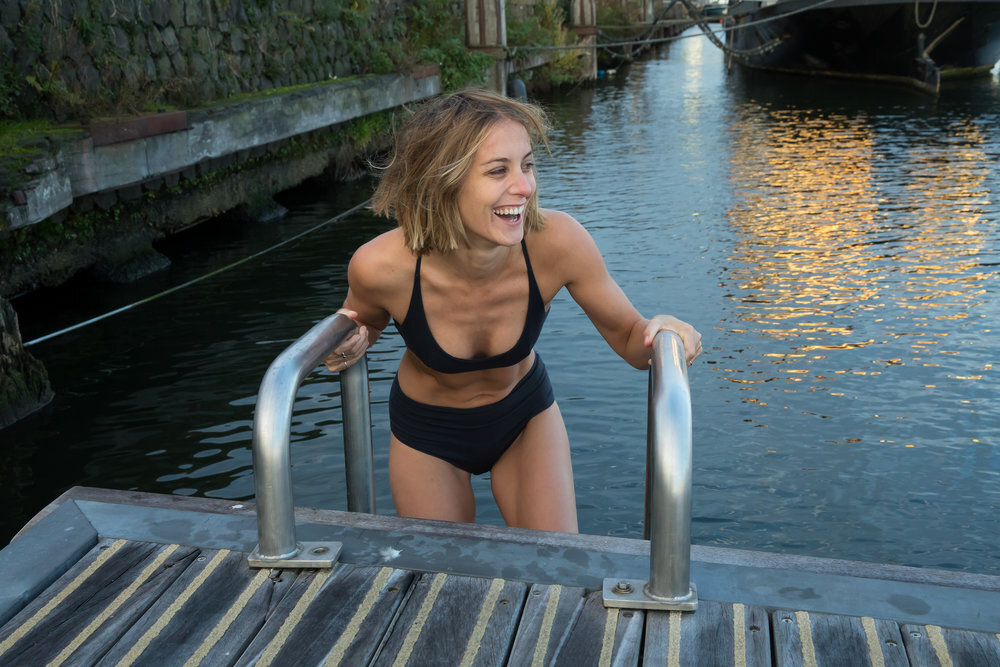So You Want To Start Wild Swimming? // A Cold Water Guide
So you want to start cold water swimming but the furthest you’ve got is dipping your toes in in August? You’re scared of the sea? You live in the middle of the city? Well, this guide is here to give you that extra nudge to just jump in. Or rather get in slowly and carefully depending on the location and temperature. Trust me, if you can get in the cold water, you can do almost anything. You got this.
1) Find a buddy. My biggest bit of advice is that you need a partner in crime. Not only is it much safer with a friend (never swim alone!) it’s also much more fun. The friend will hold you accountable, if you’ve said you’ll be there at 7am you better well be there. Community is also a massive part of cold water and wild swimming, these faces you come to greet every morning at your swim are the faces that will be there for you through job loss, relationship breakdown, grief and turbulence. I suggest just doing a shout out on your social feeds and I’d imagine there is some one in your network who is also keen and looking for a friend. If no one bites there’s lots of existing outdoor swimming groups to join, check The Outdoor Swimming Society to see if there is an established group in your area.
2) Where to go? If you don’t live at the coast, I can (almost) guarantee there is still somewhere to swim near you. There are amazing wild swimming locations all over the UK and Ireland and even in the centre of London there are multiple places you can slip into the water and splash around with the ducks surrounded by trees. Research your chosen swim location, you don’t want to swim somewhere where the water is really dirty or somewhere unsafe, which leads me to …
3) Safety first. I get called Safety Soph a lot. You may see me in some wild conditions but there are plenty of mornings we go home dry because the sea is too wild. I grew up by the ocean and have been a qualified beach lifeguard for over 10 years so I am a pretty competent swimmer, but the ocean is a wild mistress and we gotta respect her. Know where you are swimming, ask local lifeguards or other water users about the area and conditions and make sure you understand the tides, rips, bottom surface and waves. When we swim in the sea we always stay well within our depth and swim parallel to shore, not out to sea, and when swimming in lakes and reservoirs stay close to the edge so you can get out the water quickly and easily. Do not put yourself in water where you could get swept out to sea, out of your depth or somewhere where you cannot exit easily. If you don’t feel comfortable swimming 50 meters in a pool don’t go, most local pools offer really good swimming lessons for adults and improvers, get confident swimming somewhere safe first.
4) Wear the right kit. I like to wear a swimming hat or two, or a wooly hat if the conditions are calm. A lot of people also choose to wear neoprene booties and gloves. Outdoor swimming in cold water saps your body heat, so your arms and legs get weaker quickly. If this happens, you could get into trouble if you're unable to get out of the water, so wear a wetsuit for anything more than a quick dip. Most importantly have warm clothes and lots of layers for when you get out, even on a warm day you will get a chill. Have clothes ready that are easy to put on, a towel (I use a Dry Robe), thick socks and hat.
5) No Jumping. We always enter the water slowly especially when it’s cold, if you aren’t acclimatised to the cold water you could get cold shock by just diving in. You also never know what’s under the surface or how deep it is. I do however think it’s important not to hesitate. Slowly and calmly enter the water and get in control of your breath.
6) BREATHE! My most important advice for life. Focus on long, slow exhales. This will help to trigger your parasympathetic nervous system and keep you calm.
7) Time. You don’t have to show off and stay in so long you get hypothermia. We have a little made up rule thats two minutes minimum, and most days in the winter we do just this, two minutes. In the summer we stay longer but the academic studies I’ve read on cold water immersion were based on two minutes and said there’s no real benefits to staying longer. I find the first 30 seconds or a minute is the hardest part, then it gets a little easier. Shivering and teeth chattering are the first symptoms of hypothermia. If that happens, get out of the water and warm up.
8) Warm up slowly. Although I’m a lover of a sauna and a hot shower, I’ve actually found it best to warm up naturally and slowly. Just wrap up warm and keep a focus on your breathing.
9) Flask of tea at the ready. A hot beverage after you’re dressed is delightful. You’re welcome.
10) Know your limits. There are days when we have 10 people out of bed on the slipway at 7am and we all have to go home because the waves are too big, the rip too strong, tide too high or sky too dark. And if you can only stay in the water one minute, that’s amazing, you still did it.
11) Don’t be shy. Contact other swimmers in the area and ask if you can join, that’s how I’ve made some of my best friends. Contact local lifeguards and ask if it’s safe to swim. And tag #risefierce on your pictures to make sure I see your swim photos too!
12) Rise Fierce Retreats. If you’re still not convinced you can do it without me, I’m running retreats and workshops throughout the year that include cold water swimming, yoga and delicious food. Keep an eye on my retreats page for events.






